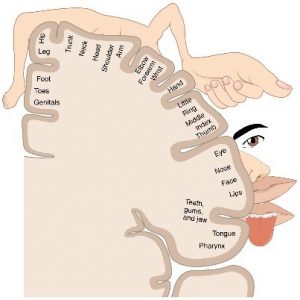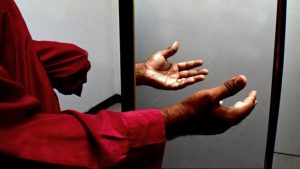This post is also available in Dutch.
Do you believe in ghosts? Phantom or ”ghost” pain happens when a limb is amputated. Painkillers aren’t an option. So, how does it work and how is it dealt with?
After amputating an arm or leg, many patients will experience phantom pain. They will complain, for instance, of pain in their index finger while their whole hand might be missing! This can be very difficult. So, what can you possibly do to relieve a mysterious pain in a missing limb?
Where does the pain come from?
Phantom pain exists because of oversensitive nerve cells. There are several theories as to what the underlying reasons might be. For example, remnants from severed nerves might continue to send signals to the brain. You might even feel phantom pain as a memory: when there is an absence of new signal, you keep feeling the signal that once was. That is, you’ll keep feeling the pain in that body part that is now amputated. All things considered, phantom pain has to do with a ‘reorganization problem’ in the brain, which we’ll explain below.

Reorganizing the brain
Let’s consider the following example: Mr. Wonders has hurt his arm in such a way that the only option is to amputate it. Despite a successful surgery, he now suffers from phantom pain, which worsens when his face is touched.
You’re probably wondering how touching Mr. Wonders’ face has anything to do with his phantom hand. And out of thin air, here comes the real phantom: the ‘homunculus’. This is what we call a kind of brain map (see the image underneath). It shows how regions of the brain are specialized in feeling and controlling different body parts.
The surgeon has removed Mr. Wonders’ left hand, but the nerve cells in his brain used to feel his left hand are still intact. Those brain cells now just sit there without any work, but not for long. Because brains use the space they have efficiently, they will put the remaining cells into neighboring areas. It just so happens that sometimes those neighboring areas will receive a signal, which might feel like that old hand or foot. This explains the phantom pain that Mr. Wonders has, which was more sensitive when his face was touched. His brain is making a fool out of himself!
Saved by your reflection
In order to treat phantom pain, we start at the place where it all first went wrong: fixing the faulty reorganization inside the brain. Back in 1995, help seemed to have arrived from unsuspecting corner: by looking at your own reflection! By using mirror therapy, exercises are carried with the healthy limb reflected in a mirror. By looking into the mirror, the amputated arm looks like it’s actually still there and functioning fine. By doing this, the signals that otherwise send phantom pain to the brain, are no longer needed. This also helps fix the reorganization that went wrong. The brain regions that were previously involved in Mr. Wonders’ now amputated arm, slowly regain their old job back. At least, that’s what they think! Without the need for medicine or expensive treatments, Mr. Wonders is able to return the favor to his brain, by fooling it out of pain.

Still doubting?
Mirror therapy is easy and cheap, the ideal therapy! Nevertheless, there is still some degree of uncertainty. Some studies have found that mirror therapy is an effective treatment, whereas, others have found no effect. This can happen. It’s up to science to further test both these findings effectively and thoroughly.
This blog was written by Ralf Weijs.
Edited: Annelies.
Translated: Marpessa.
Want to see more?
Video: Treating ‘phantom limb pain’ with mirror therapy
